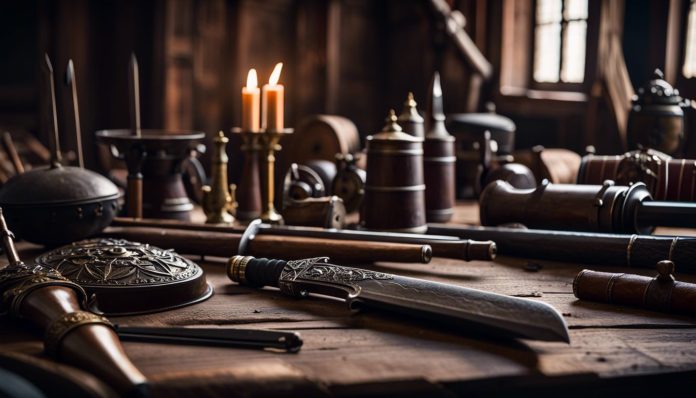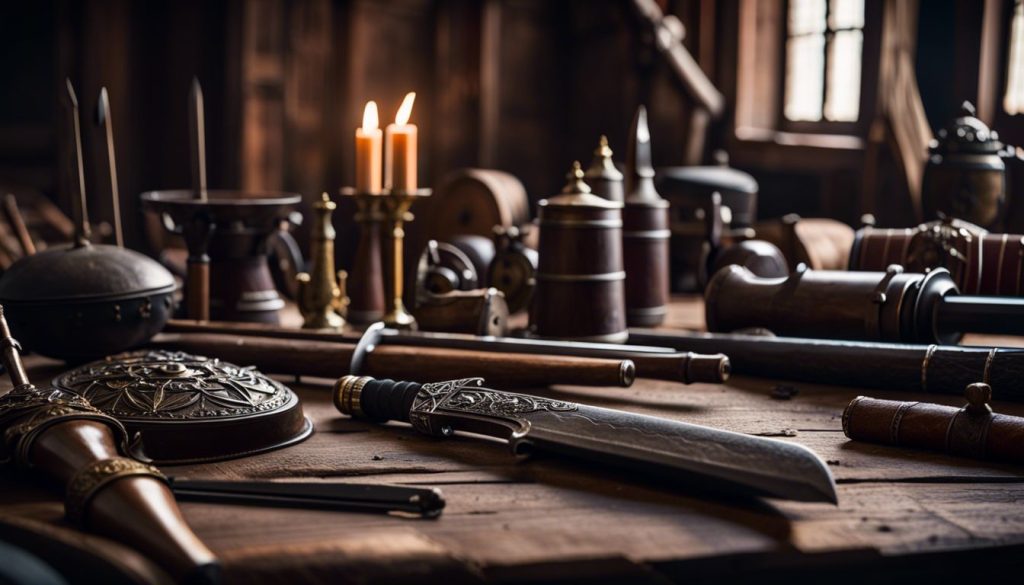Curious about the weapons that shaped battles and kingdoms during the medieval period? This era, spanning approximately from the 5th to the 15th century, was a time of great innovation in warfare technology.
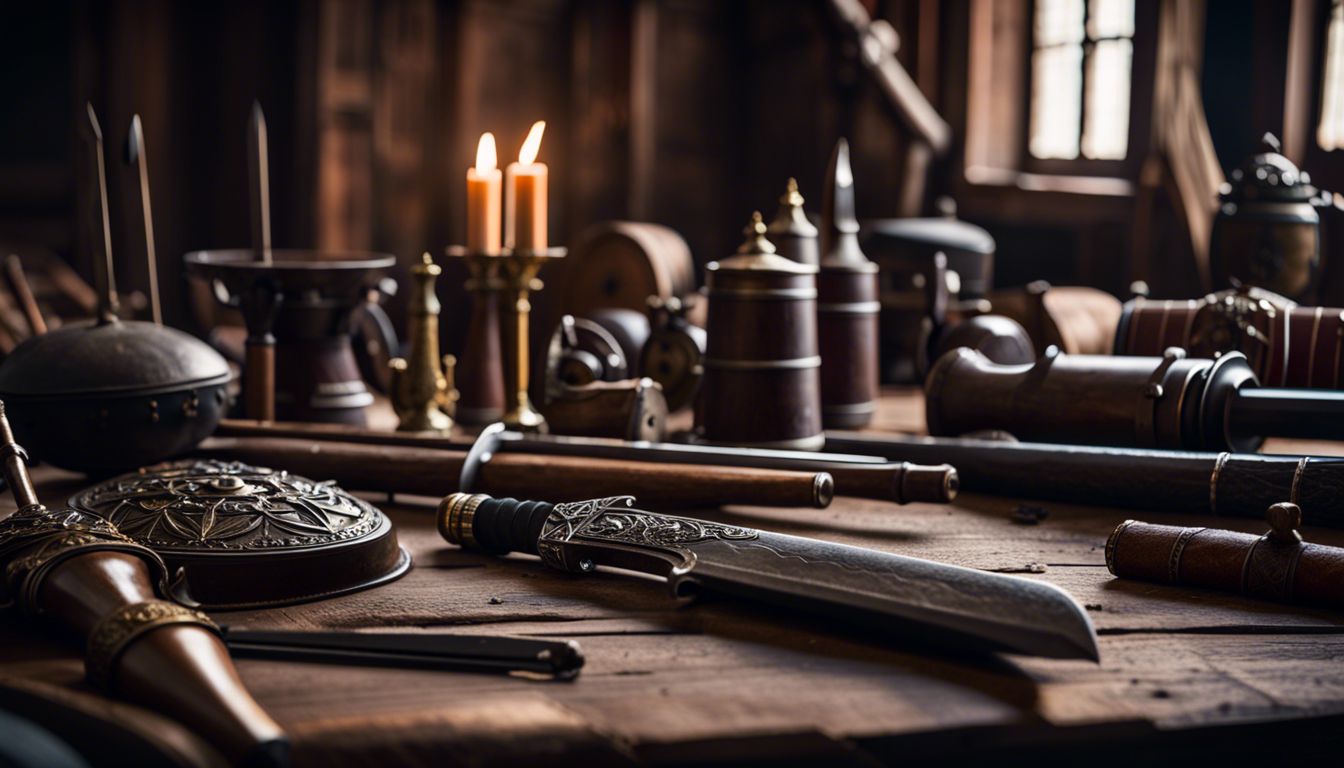
In this article, we’ll take you on an exciting journey that reveals everything from chivalrous swords and deadly spears to early gunpowder firearms and mighty trebuchets. Ready for a historical adventure? Let’s dive in!
Table of Contents
- 1 Overview of Medieval Weapons and The Importance of Warfare
- 2 Melee Weapons
- 3 Ranged Weapons
- 4 Siege Weaponry in the Middle Ages
- 5 Medieval Armor and Defense
- 6 Key Differences Between Asian and European Medieval Weaponry
- 7 The Impact of Medieval Weapons on Today’s Military
- 8 To Wrap Up
- 9 Frequently Asked Questions (FAQs)
Overview of Medieval Weapons and The Importance of Warfare
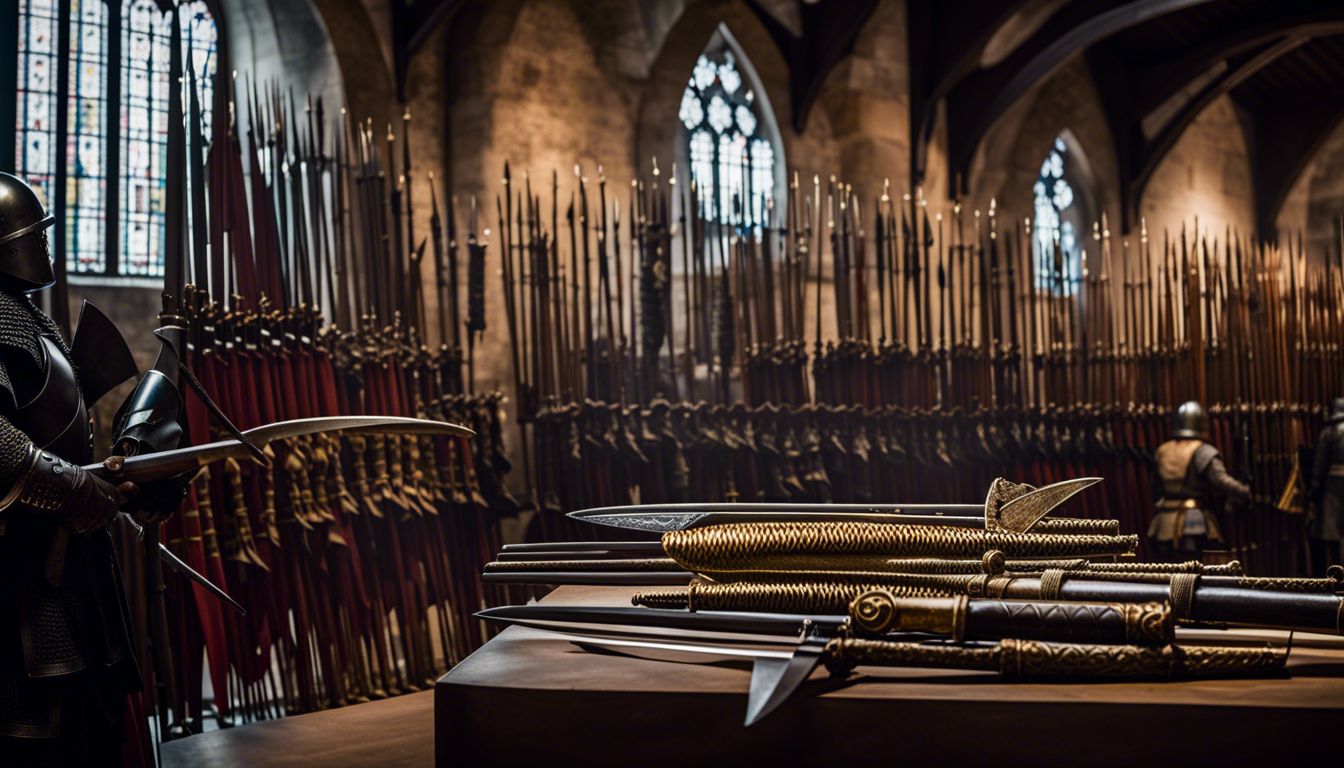
Ever wondered about the deadly tools of destruction used in medieval warfare? From awe-inspiring swords to thundering cannons, these instruments shaped battles and empires. This article will whisk you back to the Middle Ages, aiding your understanding of such weapons, their use in battle, and the evolution of military technology. Get ready; a thrilling journey into the world of Medieval weaponry awaits!
Melee Weapons
Swords and Lances
During the medieval period, swords and lances served as primary weapons for knights and soldiers across Europe. The sword, revered for its versatility in close-quarters combat, was a symbol of power and skill, often personalized with distinct hilts or engravings. Varieties such as the arming sword were popular during the high middle ages while longswords dominated battlefields towards the late middle ages.
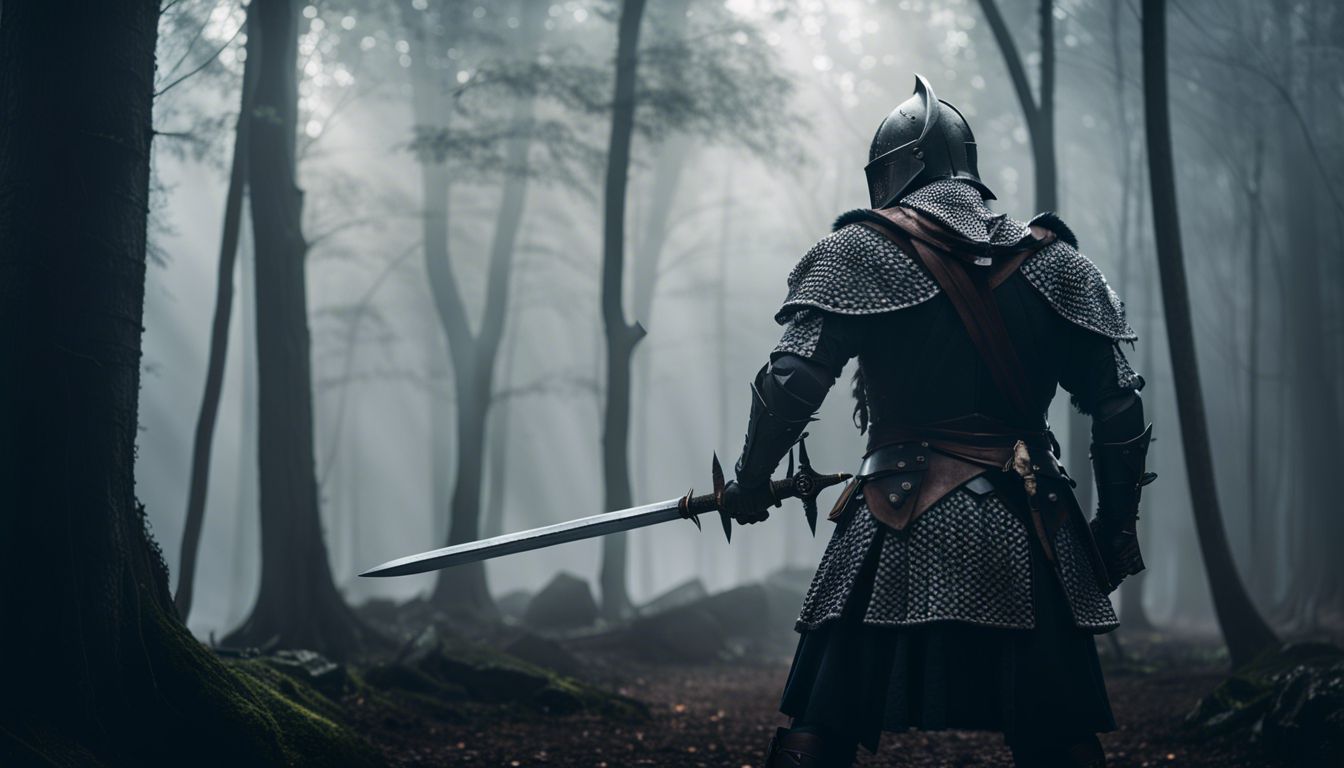
Lances played an equally vital role in medieval warfare; primarily used by mounted cavalry. These polearm weapons delivered a powerful initial impact on the enemy lines at the start of a battle. Ranging from 9 to 14 feet long, they allowed horsemen to strike opponents before they could retaliate – showcasing their effectiveness in both offensive and defensive situations.
Daggers
Daggers, often considered the secondary weapon of knights, played an indispensable role in medieval warfare. Seen as smaller versions of knightly swords but with pointed sharp blades, these handheld weapons were designed for close combat situations.
Unlike other melee weapons like swords or spears, daggers didn’t aim to kill outright but incapacitate enemies instead. They were skillfully used to exploit vulnerabilities in armor and deliver precise attacks.
For instance, their sharp points made them perfect for removing helmets off rival soldiers exposing them to fatal blows; a strategic move critical on the medieval battlefield where every advantage made a difference.
Despite being smaller and less acclaimed than their larger counterparts such as the arming sword or lance, daggers remain a significant part of our understanding of premodern combat weapons and military technologies during the Middle Ages.
Maces
Maces were a powerful and fearsome type of medieval weapon, commonly used during battles. These trauma and cleaving weapons were designed to deliver devastating blows, often capable of incapacitating opponents in a single strike.
Unlike blades that could get stuck in armor or shields, maces had solid metal heads with spikes or flanges that could easily crush bones upon impact. With their weight and brute force, maces became indispensable for knights and foot soldiers alike, allowing them to overpower enemies on the battlefield. Alongside swords and spears, maces played a crucial role in shaping the outcome of medieval warfare.
War Hammers
War hammers were fearsome weapons used in medieval warfare. These melee weapons were designed to deliver devastating blows, particularly against armored foes. With their heavy heads mounted on long handles, war hammers could pierce through armor and crush bones with ease.
They were especially effective against knights and heavily armored soldiers, as the impact of a war hammer could cause severe internal injuries even without penetrating the armor. The weight and design of the war hammer allowed for powerful swings that could disable an opponent quickly. This made them a favorite choice for foot soldiers during battles in the Middle Ages.
Ranged Weapons
Crossbows
Crossbows were one of the most powerful and accurate ranged weapons used during the medieval period. They were popular among both infantry and mounted soldiers, providing a deadly advantage on the battlefield. Crossbows functioned by using a lever mechanism to release a bolt or quarrel with great force and precision. Unlike longbows, crossbows required less strength to operate, making them accessible to a wider range of warriors.
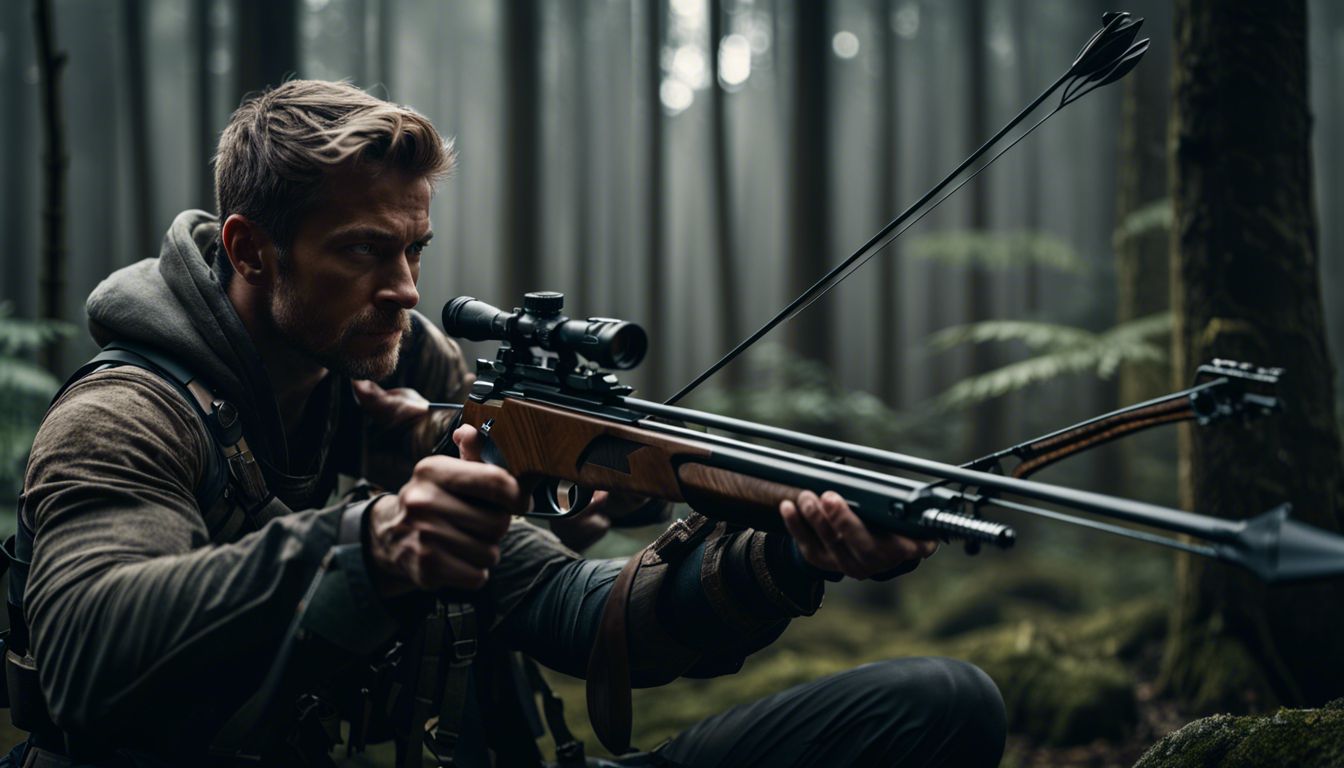
Their ability to penetrate armor made them particularly effective against heavily armored opponents, giving soldiers an edge in combat. With their combination of power, accuracy, and ease of use, crossbows played a significant role in shaping medieval warfare.
Longbows
Longbows, one of the iconic weapons of the medieval period, were highly valued for their impressive pull and firing speed. These ranged weapons played a significant role in medieval warfare, particularly during the Hundred Years War between France and England.
Despite their arrows rarely penetrating metal armor, longbows remained effective on the battlefield. In fact, they dominated until the introduction of cannons. Longbows eventually gave way to firearms, marking a transition from traditional melee weapons to gunpowder and crossbows.
Today, longbows are considered a significant part of medieval weaponry and are especially appreciated by history lovers for their historical importance and unique design.
Spears and Javelins
Spears and javelins were essential weapons during the medieval period. Spears, long-range thrusting weapons, were cheap to make and commonly used by infantry soldiers. They provided reach and effectiveness against cavalry charges.
Javelins, on the other hand, were thrown at a distance to disrupt enemy formations or engage in ranged combat. Both spears and javelins played crucial roles in medieval warfare, helping armies maintain their offensive capabilities and defend against enemies. These melee weapons are just a glimpse into the fascinating world of medieval weaponry that shaped our history.
Siege Weaponry in the Middle Ages
Trebuchets and Catapults
Trebuchets and catapults were the ultimate weapons of destruction in medieval warfare. These towering siege engines were capable of hurling massive projectiles towards enemy fortifications, causing chaos and devastation. The traction trebuchet was commonly used during the Middle Ages, relying on a team of men to pull back the giant arm before releasing its deadly payload. However, it was in the 13th century that the counterweight trebuchet emerged, utilizing weights to increase its power and range.
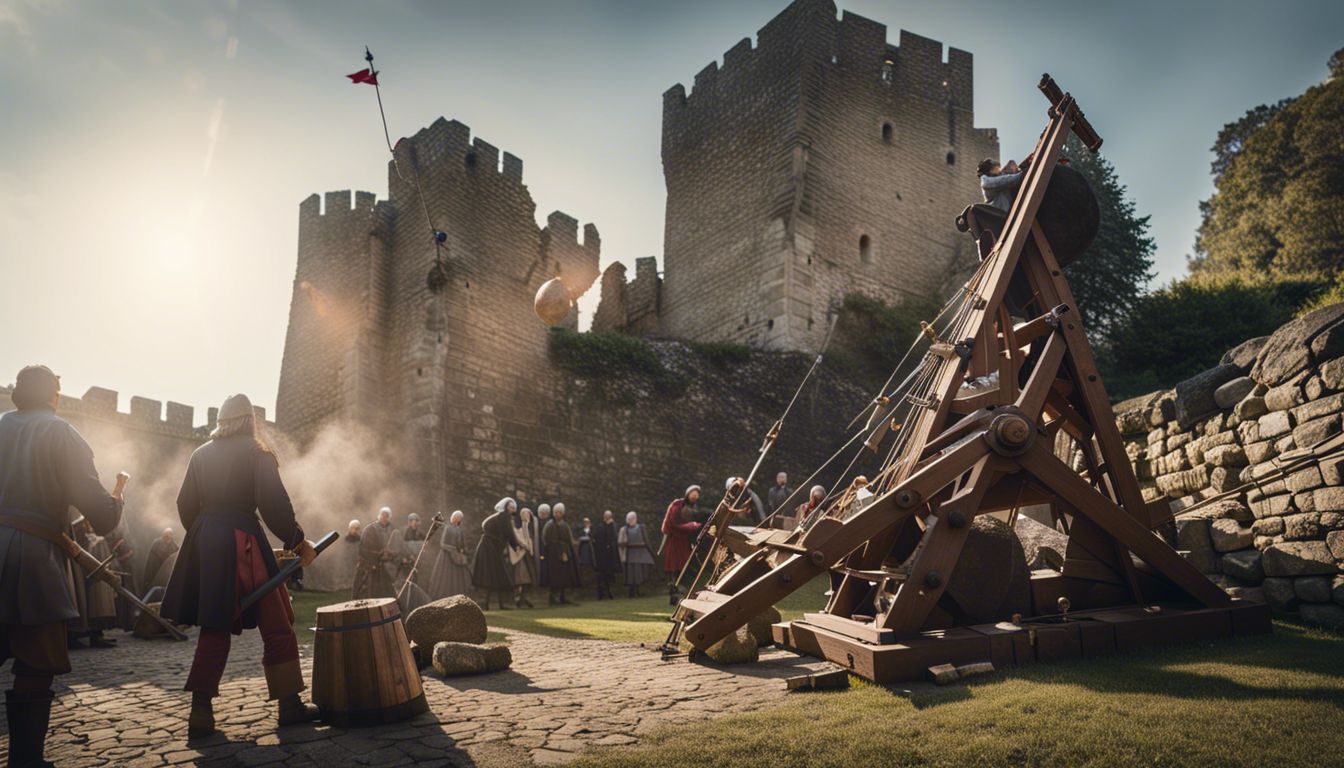
These impressive machines could launch incendiary missiles, such as fireballs or pots filled with quicklime, which would blind and suffocate defenders within castle walls. Catapults also played their part in sieges by flinging a variety of projectiles toward enemy defenses.
Siege Towers
Siege towers were formidable wooden structures used during medieval warfare to breach castle walls. These towers, slightly taller than the walls themselves, allowed soldiers to traverse over and into fortified defenses.
Equipped with archers and sometimes even battering rams, they proved to be a crucial asset in sieges. The trebuchet is another notable siege weapon that played a pivotal role during this era.
Capable of launching incendiary missiles and breaking down castle walls, it was unmatched in its destructive power. Chinese military units were known for their deadly tactics as well, employing spears and sabers with great effectiveness.
Battering Rams
Battering Rams were a crucial part of medieval warfare, often employed during sieges to breach castle doors and walls. These siege weapons consisted of large heavy logs that were swung or rammed into the enemy’s defenses with tremendous force.
Used in conjunction with other siege weaponry like trebuchets and catapults, Battering Rams played a pivotal role in capturing enemy fortifications. Their effectiveness in breaking down castle defenses made them an important tool in medieval warfare, allowing armies to gain access to heavily fortified structures and claim victory.
Explore Medieval Times Deeper or Continue Reading…
Medieval Armor and Defense
Medieval armor provided essential protection for warriors in battle. Chain mail armor, spaulders, and shields were commonly used to defend against enemy attacks. Read on to learn more about the various types of medieval armor and their importance in medieval warfare.
Chain Mail Armour and Hauberk
Chain mail armor, including the hauberk, played a crucial role in medieval warfare. This type of armor consisted of interlocking metal rings that provided excellent protection against slashing and piercing attacks from swords, spears, and even crossbows.
The construction of chain mail required skilled craftsmanship and was a labor-intensive process. Although it wasn’t impervious to all types of attacks, especially those from heavy siege weapons, chain mail was highly effective in deflecting and absorbing the impact of sword strikes.
It also offered some defense against arrow attacks, although arrows could still cause injury through gaps in the armor. Chain mail armor allowed for freedom of movement during close-quarters combat while providing vital protection on the battlefield.
Spaulders and Pauldrons
Spaulders and pauldrons were components of medieval armor used for defense. They provided protection for the shoulders and upper arms, crucial areas in battle. Made of metal, they were designed to deflect blows from weapons, distributing the force of impact.
Knights relied on spaulders and pauldrons as part of their protective gear on the battlefield. Over time, these armor pieces evolved to adapt to changing warfare tactics. However, with the development of gunpowder and firearms, their relevance diminished. Still, during the Middle Ages, spaulders and pauldrons played a vital role in shielding warriors from harm.
Shields
Shields were an integral part of medieval warfare and played a crucial role in defense during battles. They were typically made of wood or metal and provided protection against incoming projectiles, such as arrows or stones.
Shields were not just used for physical defense; they also served as a means to deflect sword blows and provide cover for soldiers. Different types of shields existed, including round shields, kite shields, and heater shields.
These shields could be personalized by knights with their coat of arms or family crest, making them both practical and symbolic. Shields are often associated with medieval armor and are an iconic symbol of the Middle Ages.
Key Differences Between Asian and European Medieval Weaponry
When comparing medieval weaponry, the key differences between Asian and European tools of war are stark. Here are some of these distinctions:
| Asian Medieval Weapons | European Medieval Weapons |
|---|---|
| Samurai swords or Katanas, recognized for their sharpness and curved blades, were primary melee weapons | Swords like Longswords and Falchions were widely used, generally straight-bladed and double-edged |
| Throwing weapons like shurikens and chakrams were common in close-ranged situations | Melee weapons like maces, daggers and war hammers were often used in close combat |
| Crossbows were not as prevalent; longbows, such as the Japanese Yumi, were preferred | Crossbows and Longbows held significant roles in ranged warfare in Europe |
| Warfare often involved the use of animals, notably horses and elephants | Horses, particularly destriers, coursers and rounceys, were predominantly used in warfare |
| Gunpowder was actively used in siege weaponry, contributing to the development of early firearms | Gunpowder was initially used for its explosive properties in siege warfare before evolving into firearm usage |
These differences highlight the diverse approaches in warfare strategy and technology between Asia and Europe during the medieval period.
The Impact of Medieval Weapons on Today’s Military
Medieval weapons, with their ingenuity and effectiveness, have left a lasting impact on today’s military strategies and technologies. From the mighty sword to the devastating trebuchet, these ancient weapons have shaped how we approach warfare in the modern era.
The use of swords in medieval times revolutionized close combat, delivering deadly blows with minimal effort. This concept translated into modern military tactics, where hand-to-hand combat skills are still emphasized for soldiers.
Additionally, the introduction of gunpowder during that period paved the way for firearms that eventually became standard armaments used by ground forces around the world today. Trebuchets and other siege engines from medieval times inspired later developments such as cannons and missile launchers.
Even archers played a crucial role in shaping ranged warfare strategies and techniques still employed in contemporary conflicts. The legacy of medieval weaponry can be seen not just in historical records but also reflected in modern-day military equipment like sniper rifles and helicopters which bear their names as a testament to their enduring influence on warfare through time.
To Wrap Up
In conclusion, medieval weapons played a crucial role in shaping the course of warfare during that period. From the devastating power of melee weapons like swords and maces to the long-range precision of crossbows and longbows, these tools influenced battles and sieges. The introduction of gunpowder and firearms added another layer to warfare, forever changing military tactics. Today, we can still see the influence of these medieval weapons on modern military technology.
Frequently Asked Questions (FAQs)
1. What were the most common weapons used in medieval times?
The most common weapons used in medieval times included swords, spears, bows and arrows, axes, maces, and daggers.
2. How effective were medieval weapons in battles?
Medieval weapons varied in effectiveness depending on factors such as skill of the wielder, quality of the weapon, and tactics employed. Some weapons like longbows and crossbows had significant range and piercing power, while others like swords and axes were more effective at close quarters combat.
3. When did gunpowder start to be commonly used in warfare?
Gunpowder started to be commonly used in warfare during the late medieval period around the 14th century. It revolutionized warfare by introducing firearms such as muskets and cannons.
4. Were there any specialized medieval weapons for knights?
Yes, knights often carried specialized weapons such as lances for mounted combat or poleaxes for dismounting opponents from horses. These weapons were designed to take advantage of their armored protection and enhance their effectiveness on the battlefield.

